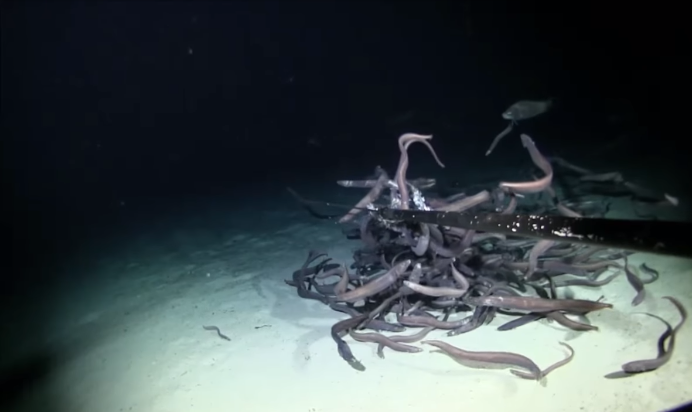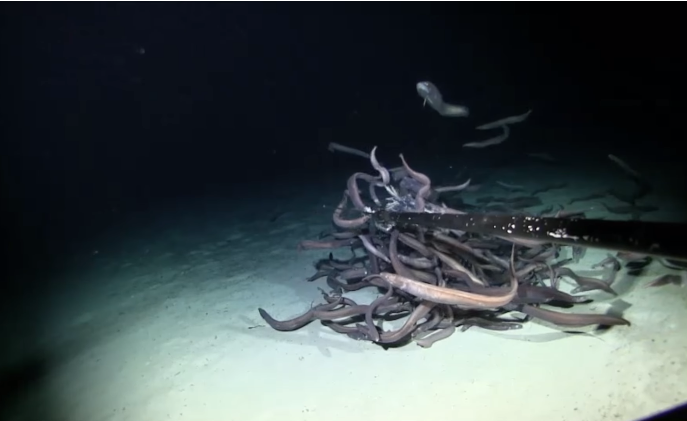Researchers recently set a new world record for the largest cluster of fishes ever recorded in the abyssal deep sea, 9,800 feet below the surface. With some careful planning and use of strategy, the oceanographers were able to not only locate the massive group of fish but also capture it on video.
The life they captured so far below the surface turned out to be a group of 115 Ilyophis arx, also known as cutthroat eels.
Though they set out optimistic, the researchers were not actually expecting to discover so many fish in the abyssal deep sea. As Astrid Leitner, an oceanographer and lead author on the study, stated, “Our observations truly surprised us. We had never seen reports of such high numbers of fishes in the sparsely-populated, food-limited deep-sea.”

The discovery was made in the Clarion-Clipperton Zone (CCZ), an area of deep seafloor that reaches from Hawaii towards Mexico. It’s known to house rare metals, such as cobalt, manganese, zinc, and copper, and is used in mining operations. The aggregation of eels was found near one of the mining operation areas.
According to Science Alert, the area’s mining operations are steadily growing, though little is known about the habitats or life that deep below the surface. They stated:
“Over the years, it’s drawn increasing interest from the mining industry, which sees this new region as a way to cut down on human labour and the destruction of precious land. Sixteen contracts have already been issued for deep sea mining in more than 1 million square kilometres of this zone, and yet only a tiny portion of deep abyssal habitats have been sampled, explored, or even mapped by scientists.”

The oceanographers that discovered the record-breaking group of eels studied just a few seamounts in the CCZ. Because of their findings, some are speculating that seamounts, or underwater mountains with peaks located 9,800 feet below the surface, are better equipped at supporting life than the surrounding plains.
“The number of eels observed in this study at abyssal depths is truly unprecedented for both abyssal and bathyal depths,” researchers shared in their study, published in the journal Deep-Sea Research.
Seamounts and abyssal plains make up approximately 70% of the ocean floor and “are some of the least explored habitats on the planet,” according to the National Oceanic and Atmospheric Administration. This new discovery only demonstrates the importance of protecting ocean habitats and ecology.
According to Leitner, “If this phenomenon is not just isolated to these two seamounts in the CCZ, the implications on deep sea ecology could be widespread.”
He further shared, “Our findings highlight how much there is still left to discover in the deep sea, and how much we all might lose if we do not manage mining appropriately.”
Check out the record-breaking discovery in the footage below:
Make a Donation!
You contribute a general donation to the Dean Schneider Foundation! This donation will support our purpose and be used wherever it is needed the most!
